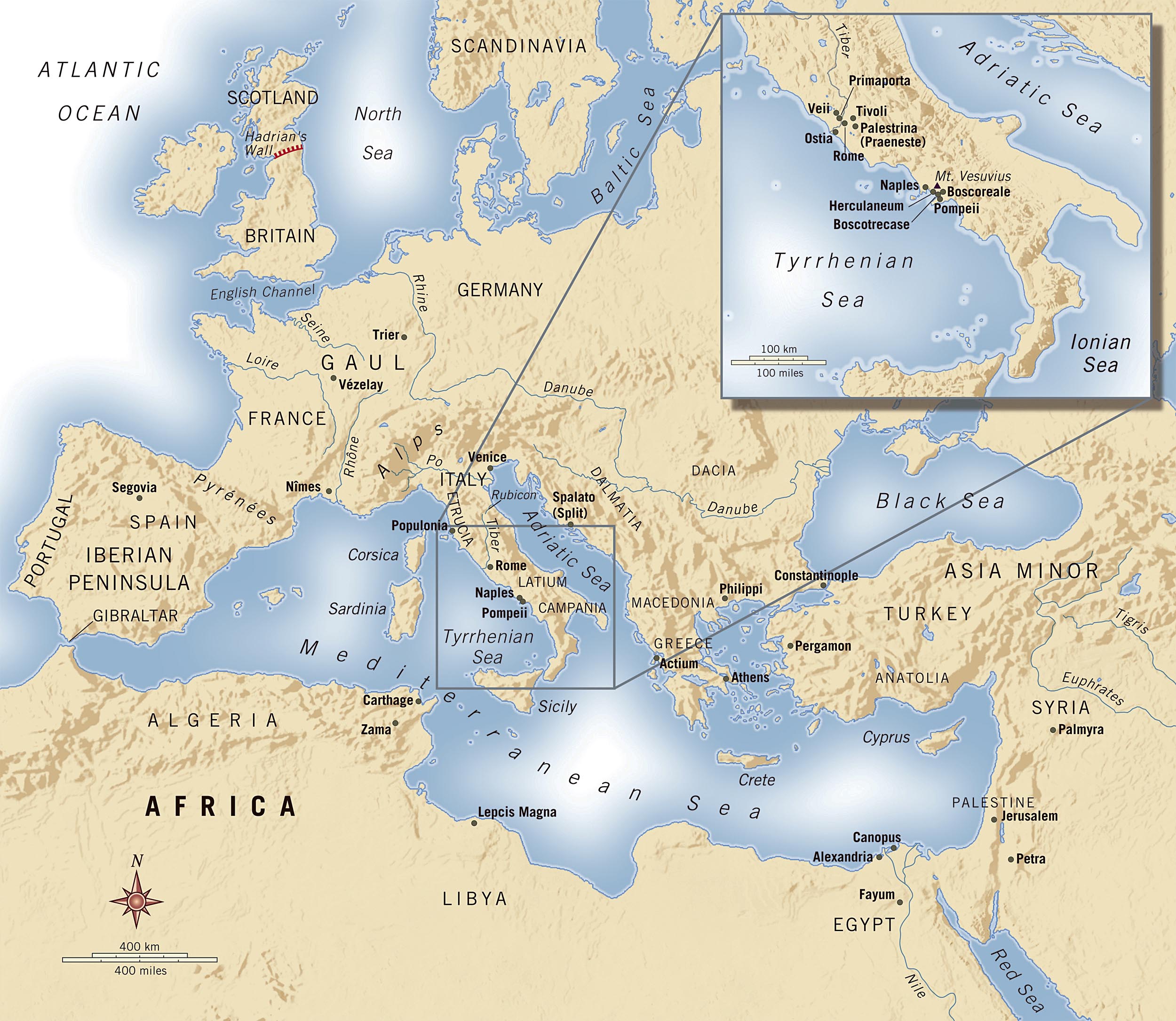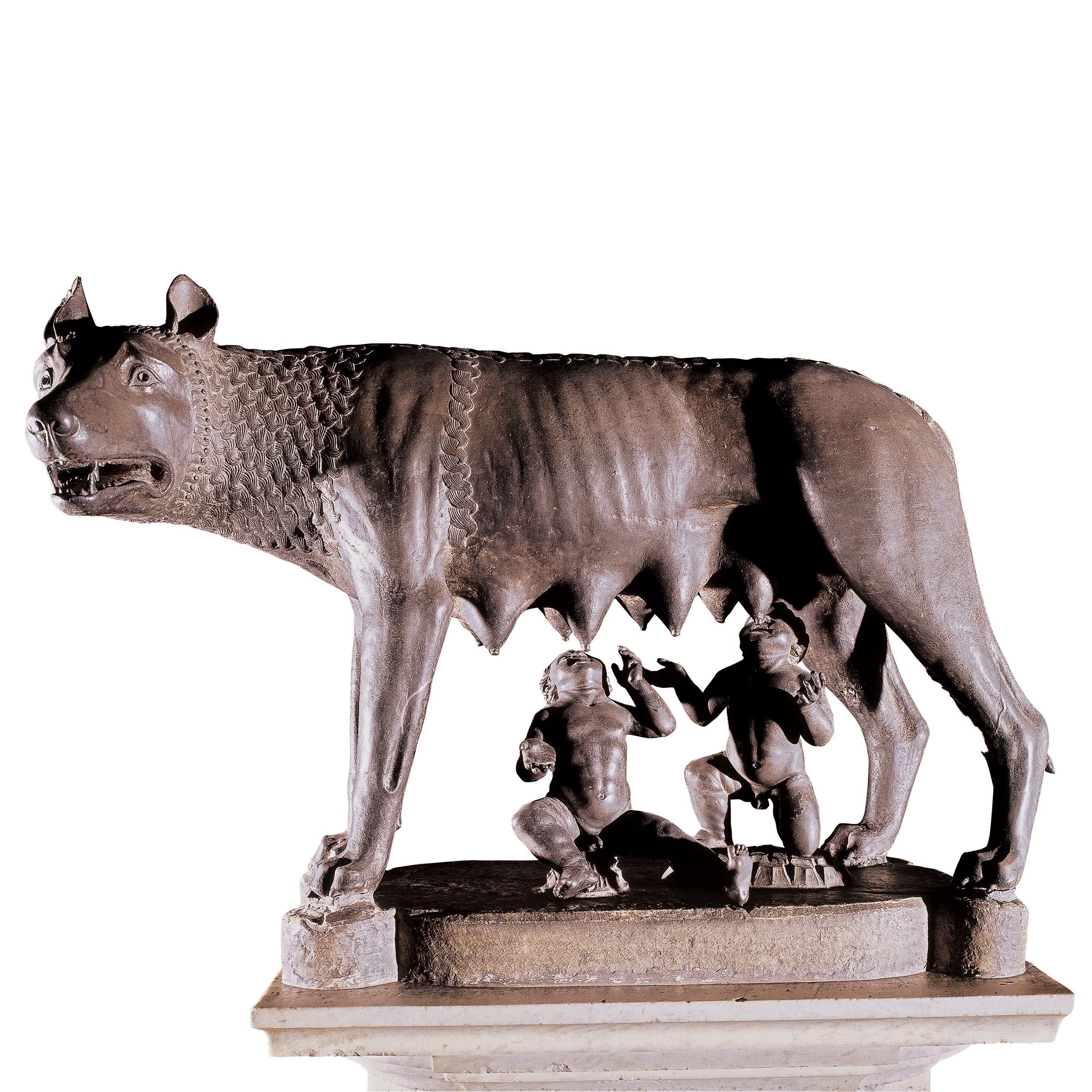The Etruscans
 Roman history can be divided into the Etruscan Age (700 - 510 B.C.E.), the Republican Age (510 - 30 B.C.E.), and the Imperial Age (30 B.C.E. - C.E. 476).
Roman history can be divided into the Etruscan Age (700 - 510 B.C.E.), the Republican Age (510 - 30 B.C.E.), and the Imperial Age (30 B.C.E. - C.E. 476).
The Roman Empire is the longest lasting and one of the largest empires the world had ever seen. It started in about 800 BCE with a group of Latin peoples who lived beside the Tiber River in Rome. The settlement grew and conquered its neighbors – the Greeks, Etruscans, and Phoecians.
From their beginning, in the area that is now Tuscany, the Etruscans had deep rooted influences which survive to this day. Although the Etruscan language is still not totally decoded, we know enough to see that many words of Etruscan origin found themselves into Latin and from there into English.
The Etruscan cities, in contrast to their Greek counterparts, never allied themselves to one another for a common defense. They were a loosely associated tribe of warlike people who fought among themselves.
Like the pre-Greek Mycenaean's, who were also defense-minded, the Etruscans built fortified cities on hilltop sites to protect themselves.
 The Etruscan She-Wolf may have been cast to celebrate the newly founded Republic of Rome, after its citizens threw out their last Etruscan king in 509 B.C. and declared autonomy. The Etruscans chose this work as their city symbol, as the she-wolf as their counterpart in the animal kingdom.
The Etruscan She-Wolf may have been cast to celebrate the newly founded Republic of Rome, after its citizens threw out their last Etruscan king in 509 B.C. and declared autonomy. The Etruscans chose this work as their city symbol, as the she-wolf as their counterpart in the animal kingdom.
The children were added much later, in the 16th century, so the she-wolf alone is Etruscan. The children represent Romulus and Remus, mythic feral twins who were abandoned by their human parents and raised by wolves. Romulus would grow up to be the legendary founder of Rome, who, in 753 B.C. plowed a sacred furrow around the seven hills that the city would eventually occupy.
The mother wolf is standing firmly on all fours, her head turned as if sensing an intruder and her teeth are bared. She is a vivid portrait of a mother's protective instincts combined with a wolf's ferocious nature.
We have seen animals as guardian figures, forces of nature, and objects of worship and so on. How does this wolf fit into what we know about animal imagery so far? She is a powerful image that can be interpreted a number of ways. And she can enlighten us about the Romans, who adopted her and have used her as their city symbol ever since. What kind of society would identify itself with this snarling wolf and why? Is she a positive or negative symbol? What are the qualities the wolf has that might be valuable to a civilization (or an empire)?